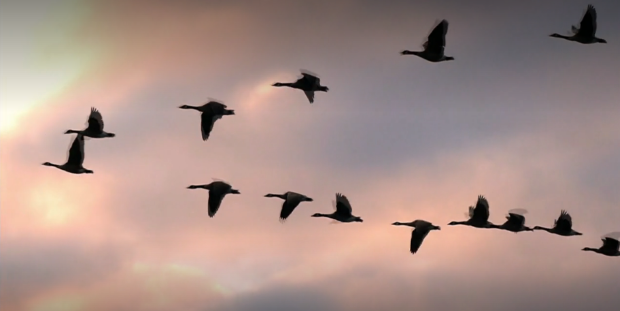Blog Post #3
- Alicia Crystal Kim
- Apr 21, 2024
- 2 min read
“Bird Brain” explains how despite all our differences, birds may think more similarly to humans than one might expect. The video focuses on various research experiments, focusing on two bird species in particular, crows and parrots. These bird species are considered to be some of the smartest bird species, which is theorized because of their larger brain size in comparison to their body. Although, it is stated that “Birds’ brains may be tiny, but for their size, they seem to contain more brain cells or neurons than many other animals. The number of neurons is a better indication of brain power than the physical size of the brain. (13:29)” So unlike many other mammal species that are thought of for their intelligence, birds are an unexpected runner in the marathon.

One researcher that is mentioned in “Bird Brain” is Konrad Lorenz—a zoologist from the early 20th century best known for his work on imprinting with geese and jackdaws. “The significance of the imprinting experiment was it showed that there were behaviors such as following that the behavior itself is instinctive. But the cue, what you follow, that’s learned. (05:32).” It is studies like these that have led scientists to hone in on what behaviors are instinctive and what is learned for birds. Because of this, they can make adjustments to the experiments to teach birds new things. That is why in many of the puzzles they give to the birds, they see if the birds can learn new ways to access food once they are taught or once they are forced to adapt.

Christina Riehl is an associate professor who works at Princeton University in the Ecology and Evolutionary Biology department. She does field experiments, among other things, to learn about the social behavior of birds and their evolution. When doing experiments on social behavior and learning in a group, viewers could see how birds could learn by observing each other and working together in order to reach a common goal.

John Marzluff, a researcher from the University of Washington, analyzes communication between birds and has a special focus on corvids such as crows and ravens. He shares in the video that birds were able to recognize the mask of an individual who caught and tagged some of the birds generations before they were born. Once Marzluff is spotted wearing the same mask, the birds begin to caw at one another to warn each other of the potential danger, and even dive at him to get him to leave or as an attack. This type of communication between birds, warning them of a potential danger, as well as communication done in order to accomplish a mutual goal is analyzed in the documentary. In Chris Clark’s research on hummingbirds, we found that they, like humans, learn from those who are older than them (Goldman). So this passing down of knowledge of a potential danger or threat is interesting to see across other bird species.
To many more bird findings and until the next time!
Alicia Kim


I love the images you chose to use in your entry! Do you think birds share emotions in a way similar to humans?